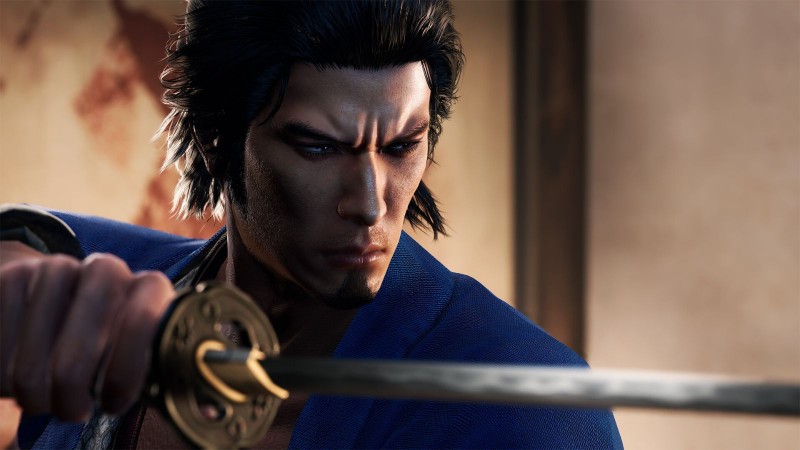Like Dragon: Ishin is not a new game. It is a remake of an older game – 2014’s Ryu ga Gotoku: Isshin, released only in Japan on PS3 and PS4. And yet, despite the age of its skeleton, in some ways, the game stands as one of the more impressive games in developer Ryu Ga Gotoku’s (RGG) portfolio — even with some noticeable weak points. also with.
Isshin takes place in the 1860s, at the end of Japan’s Edo period. You play as Sakamoto Ryoma – a real-life historical figure – who finds himself embroiled in the turbulent socio-political climate of that era in the midst of his revenge plan. Using the fake alias Saito Hajime, Sakamoto infiltrates the Shinsengumi, a police force organized to help control Kyoto at this time, while searching for the murderer of his adoptive father. But of course, as things progress, Ryoma ends up in the middle of a much larger plot, effectively giving the two time to exact their revenge and bring about great changes in the country’s entire political system. As anyone does.
It’s an engrossing drama, if at times cumbersome. Isshin’s cast uses the faces and personalities of the Yakuza main characters to represent their actual historical figures. For example, the protagonist of the Ryoma series is Kazuma Kiryu, but there are also Goro Majima, Taiga Sejima, and even some new characters that I won’t spoil here. These familiar faces helped me follow or hate the characters immediately, as I was already used to their personality traits; I quickly became devoted to the alliances, individuals, and plot threads before they even picked up steam. Ishin is one of the better-written RGG games, with impressively directed cutscenes – some of the best in the studio’s catalog – that always kept me engaged. Takaya Kuroda’s performance as Ryoma is excellent as ever, and it’s great to see Riki Takeuchi (dead or Alive, his motorbike, his island), Hitoshi Ozawa (gozu, boiling point), and Hideo Nakano (the Violation series) returns to an RGG game after his stellar roles in Yakuza 0.
On the other hand, keeping track of Isshin’s ever-twisting story feels at times like trying to balance 100 spinning plates on two hands. There’s a handful of helpful terminology, but even so, the game expects you to have at least a cursory knowledge of nearly 100 years of Japanese history on top of RGG’s trademark complex narratives. This is a lot And I especially don’t like the ending, which without spoilers, goes involuntarily meta with a curious message.
Isshin’s historical setting makes it one of the best open worlds in the series. Taking place in Kyō (modern-day Kyoto), the meticulous detailing brings the 1860s to life. I often strolled around the world in first person, marveling at sprawling shopping and drinking areas, quiet suburban communities, and winding alleyways. That said, the game’s never-ending supply of quests and sidequests often turn those peaceful journeys into a headache.
Like other RGG games, the options kick in automatically when you’re close enough to the mission giver – whether you want them to or not. Luckily, you only have to sit through the introductory cutscene and don’t have to play the entire quest unless you want to. I understand that most people have favorite parts of Yakuza games, but, as I always do, I found it incredibly annoying to occasionally have to stop five or more times on my way to a nearby location in order to Search can be done everywhere in the area. This isn’t to say that alternatives aren’t good; they are. I particularly enjoyed Isshin’s life mini-games, where you share a house with Haruka, taking care of crops, learning to cook, raising animals, and so on. I love my little house and wish I lived there instead of Minneapolis.
Combat, of course, makes up the vast majority of Isshin’s gameplay, and for the most part, it’s pretty good, harking back to the active combat of RGG games before 2020’s Yakuza: Like a Dragon’s turn-based gameplay. Ryoma is a master swordsman, but is also skilled with guns and hand-to-hand combat. You have four styles of fighting, each with their own strengths, weaknesses, and skill trees, and I love switching between the four constantly during combat. I often start with a fast-moving sword and gun stance for quick damage and crowd control. I would then switch to a more deliberate swordsman fighting style to single-out enemies for massive damage. And sometimes, I turn to the gun only to inflict damage on far-away targets. It’s not perfect – the camera often works against you in tight areas, too many enemies stab you from behind when you’re not looking, and one late-game setpiece level is frustratingly annoying – but when it works, Isshin’s combat is very satisfying.
The game also features a card system that allows for special moves. These are achieved by recruiting new members – including some familiar faces – to the Shinsengumi, either through the open world or through mostly boring dungeon-crawling content. Four can be added to each fighting style, ie 16 in total. Two personal favorites include the always-practical ability to heal large chunks of my HP bar and a lightning attack that targets every enemy in the immediate area. Combining fighting styles with the series’ Heat Moves (cinematic finishers) and new special moves into an encounter is fun, even if recruiting new soldiers is often tedious.
Like Dragon: Ishin is an awesome spin-off to an already great series, and I’m glad it finally came stateside. Even if it flopped on the landing, the story kept me hooked, and I expect some new combat styles and special moves to make their way into other RGG games. I also hope we get other spin-offs that never ended. Time will tell, but for now, it’s good to be back with your favorite criminals.
